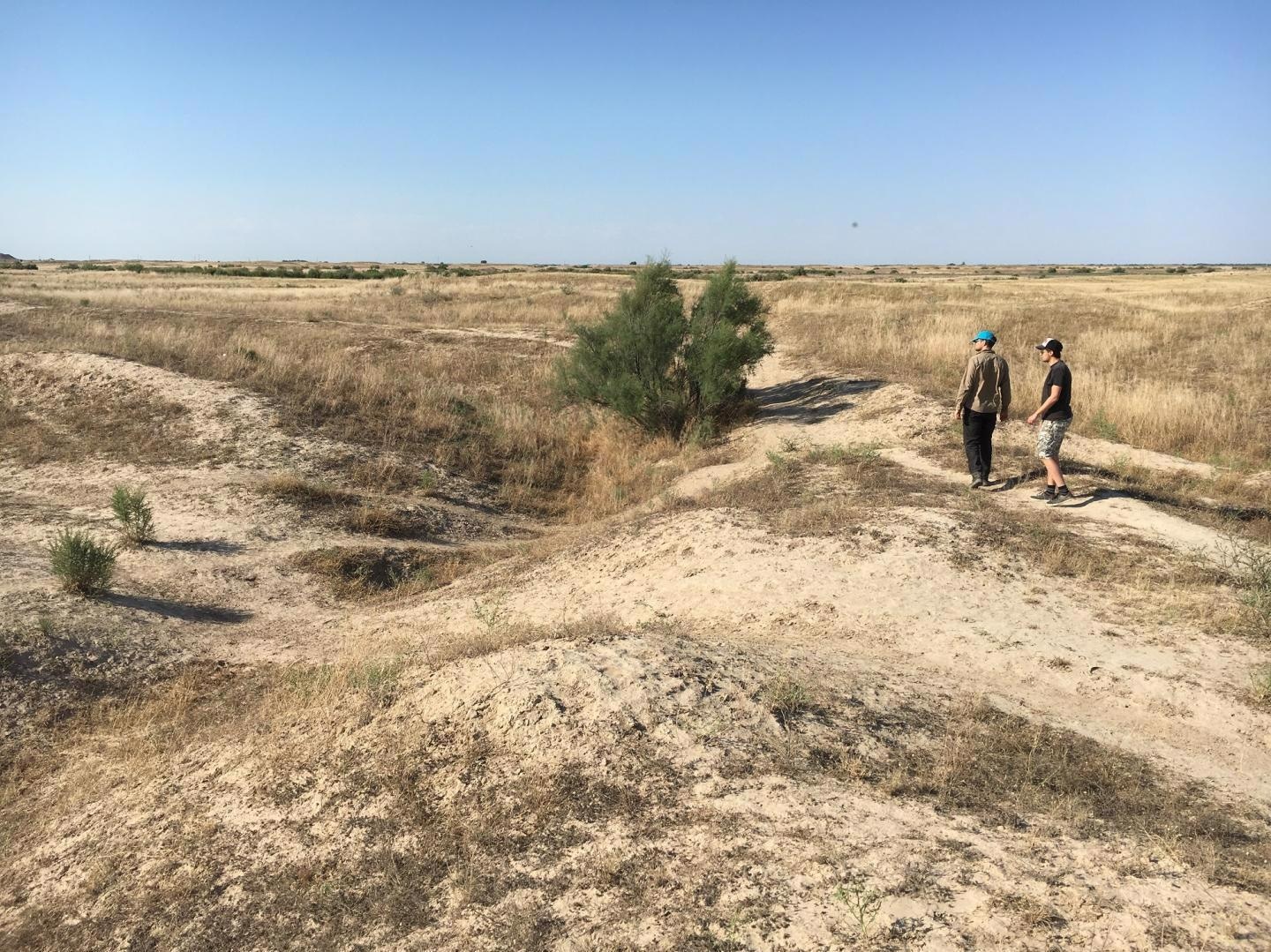Dec 16 2020
According to a new study, the long-held view that Central Asia’s medieval river civilizations were destroyed directly due to the Mongol invasion in the early 13th century CE is not right.
 Researchers investigate an abandoned medieval canal, Otrar oasis, Kazakhstan. Image Credit: University of Lincoln.
Researchers investigate an abandoned medieval canal, Otrar oasis, Kazakhstan. Image Credit: University of Lincoln.
The Aral Sea basin located in Central Asia and the significant rivers flowing via the region were previously home to modern river civilizations that used floodwater irrigation for farming.
The destruction of the region is usually attributed to the catastrophic Mongol invasion of the early 13th century. However, a new study of long-term river dynamics and old irrigation networks demonstrates that the dryer conditions and varying climate might have been the actual cause.
A study carried out under the guidance of the University of Lincoln, UK, rebuilt the impacts of climate change on floodwater farming in the region and determined that reduction in river flow was equally, if not more, essential for the abandonment of the earlier flourishing city-states.
“Our research shows that it was climate change, not Genghis Khan, that was the ultimate cause for the demise of Central Asia’s forgotten river civilizations. We found that Central Asia recovered quickly following Arab invasions in the 7th and 8th centuries CE because of favourable wet conditions.”
But prolonged drought during and following the later Mongol destruction reduced the resilience of local population and prevented the re-establishment of large-scale irrigation-based agriculture.
Mark Macklin, Study Author and Distinguished Professor of River Systems and Global Change, and Director, Lincoln Centre for Water and Planetary Health, University of Lincoln
The focus of the study was on the irrigation canals and archaeological sites of the Otrar oasis, a UNESCO World Heritage site that was previously a Silk Road trade hub situated at the meeting place of the Arys and Syr Darya rivers in today’s southern Kazakhstan.
The team studied the region to find out when the irrigation canals were deserted and analyzed the previous dynamics of the Arys river, whose waters fed the canals. The deserting of irrigation systems equals a phase of riverbed erosion between the 10th and 14th century CE, coinciding with a dry period with low river flows, instead of matching with the Mongol invasion.
The study was headed by the University of Lincoln in collaboration with VU University Amsterdam, University College London, the University of Oxford, and JSC Institute of Geography and Water Safety, Almaty, Republic of Kazakhstan.
Journal Reference:
Toonen, W. H. J., et al. (2020) A hydromorphic reevaluation of the forgotten river civilizations of Central Asia. Proceedings of the National Academy of Sciences. doi.org/10.1073/pnas.2009553117.